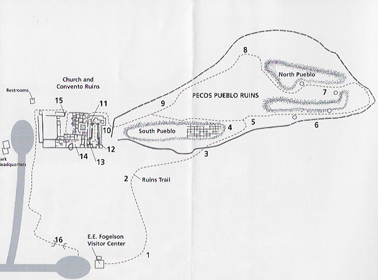
Location
Near bridge before #16 (N35D32'57.017 X W105D41'13.379)
Flowers first observed: 4/17/17
The Plant w/Flower

The Flower

Distribution
"Open sites over shale, gypsum, igneous, limestone, roadsides, grassland, Larrea flats, juniper to pinyon-juniper woodlands; Ariz., Calif., Colo., Kans., Nebr., Nev., N.Mex., Okla., Tex., Utah, Wyo.; Mexico" (SEINet)
Description
"Chaetopappa ericoides is a petite perennial herb reaching heights between 5 and 15 centimeters (2-6 inches). The hairy, glandular stem grows from a woody caudex and branches several times. The green leaves are up to about a centimeter long and are glandular and bristly. The tiny flower head is 1 or 2 centimeters wide with white or pinkish ray florets around a center of yellow disc florets. Each head has a base of pointed purple-tipped greenish phyllaries. The fruit is a hairy, round achene with a bristly white pappus.[4][5]" (Wikipedia)
""Chaetopappa" is Greek for "bristly pappus". "Ericoides", also Greek, means "similar ("oides") to Heath ("eric")", i.e., the plant's leaves are similar to those of some Heaths. Ericaceae is the scientific name of the Heath Family." (SW Colorado Wildflowers)
Ethnobotanical Uses
"Havasupai Gastrointestinal Aid Decoction of whole plant or roots taken or used as a wash for digestive troubles. Pediatric Aid Decoction of whole plant or roots given or used as a wash for children with digestive troubles. Hopi Nose Medicine Infusion of root used to 'aid a sore nose.' Panacea Root used as a universal panacea. Pediatric Aid Infusion of herb used to 'quiet the baby.' Reproductive Aid Plant used to determine the sex of a child. This is quite an ambiguous reference. The text says this: This plant is used by the Hopi Indians as genetic factor among the Indian clans. Genetic factor refers to the choice of a small (female) or (large (male) plant to assist in determining the sex of a child.' It is, therefore, unclear if the plant is used to detect whether the fetus is male or female, or to cause the child to be one or the other. Elsewhere this author tells us that the Hopi make a decoction of the leaves of juniper which is said to be a laxative and is taken by women who desire a female child. 'This suggests that the second possibility may be the correct one, with administration of large plants if you want a son and small ones if you want a daughter. Sedative Infusion of root used to 'quiet the baby.' Keres, Western Antirheumatic (External) Poultice or infusion of plant used for swelling. Navajo, Kayenta Kidney Aid Infusion of plant with sumac berries taken for kidney disease. Urinary Aid Infusion of plant with sumac berries taken for bladder disease. Navajo, Ramah Nose Medicine Dried pulverized plant applied for pain from cold or rheumatism. Antirheumatic (External) Infusion of whole plant rubbed on body for pain for swelling and rheumatic pain. Cold Remedy Infusion of whole plant rubbed on body for pain from a cold. Dermatological Aid Infusion of pulverized plant rubbed over body for swelling. Gynecological Aid Warm infusion of plant taken to 'hasten parturition." (Moerman 150-1)